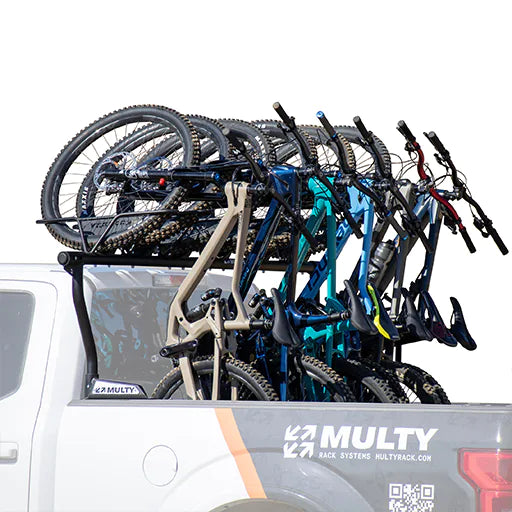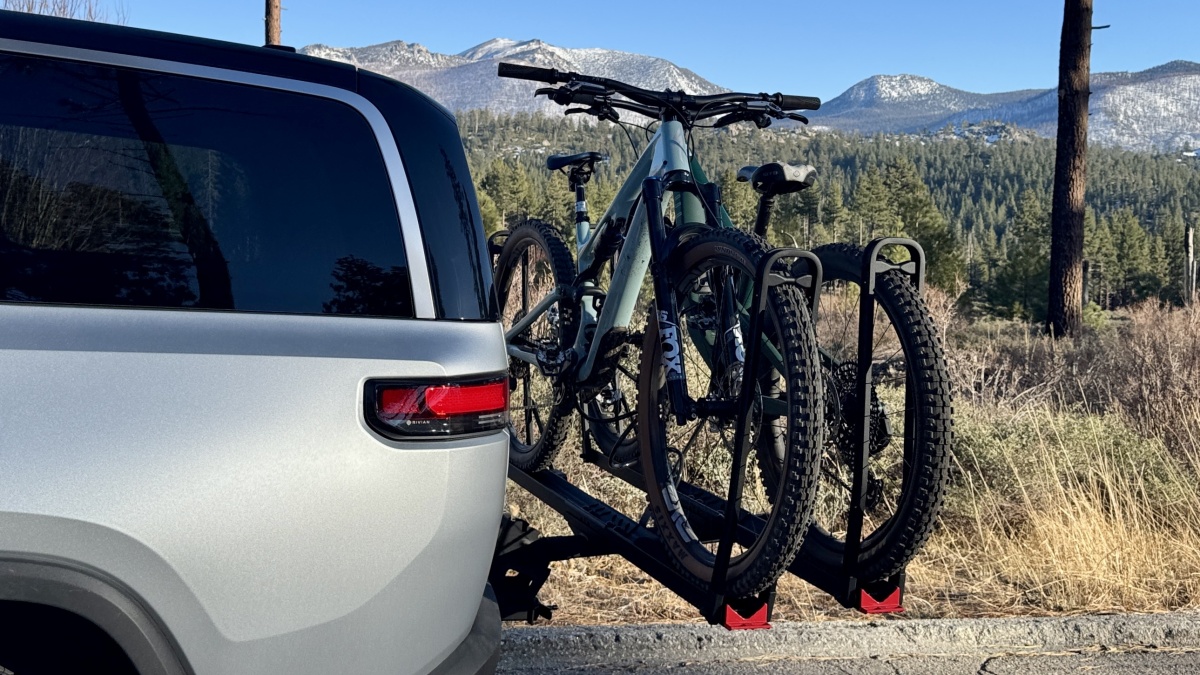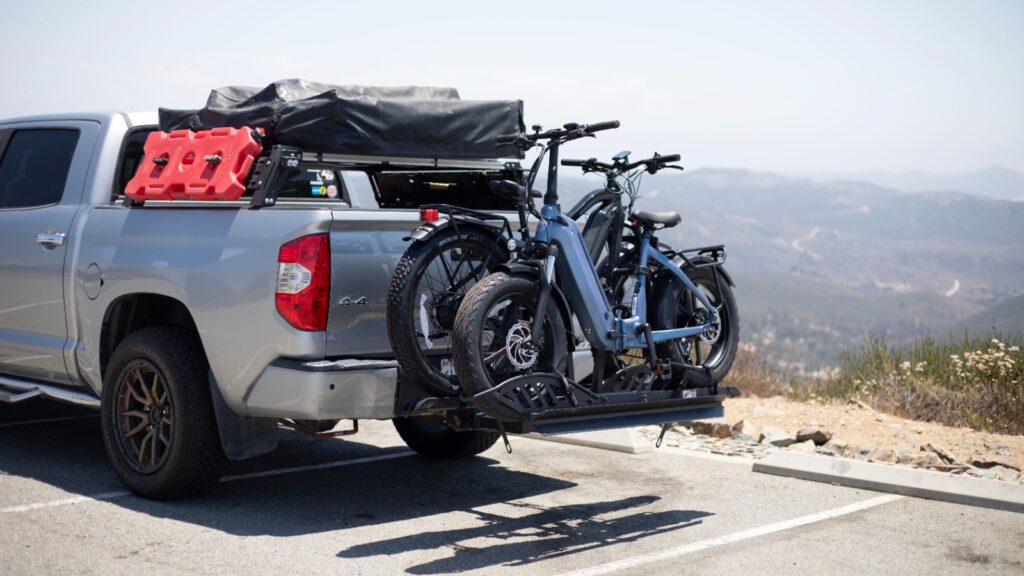Six Features to Look for in a Durable Hitch Bike Rack
Wiki Article
Check Out the Different Types of Bike Shelf and Their Practical Applications for Biking Lovers
The variety of bike Racks offered today deals with the diverse demands of biking fanatics. From freestanding to wall-mounted options, each layout provides special benefits for storage space and transport. Portable Racks additionally supply versatility for those on the move. Picking the suitable type calls for cautious factor to consider of particular requirements. Comprehending these variables can make a considerable distinction in both benefit and security for cyclists. What are the essential considerations when choosing a bike rack?Recognizing Bike Rack Keys In
Numerous kinds of bike Racks accommodate the varied needs of bikers. Among the most typical are freestanding shelfs, often located in urban locations, which permit multiple bikes to be safeguarded in a portable room. Wall-mounted Racks serve those with minimal flooring room, offering a reliable remedy for home storage space. In addition, mobile bike shelfs, created for simplicity of transport, allure to bikers who frequently travel.
Hitch-Mounted Bike Racks
Hitch-mounted bike Racks provide a sensible remedy for transferring bicycles, but understanding their installation procedure is necessary for reliable use. Users should likewise think about the weight ability of these Racks to assure safety and security and stability while taking a trip. Additionally, compatibility with various lorry types plays a considerable function in establishing the best shelf for specific needs.Installation Refine Review
When choosing a hitch-mounted bike rack, recognizing the installation process is important for assuring safety and security and comfort. First, the customer needs to confirm compatibility between the automobile and the shelf's drawback receiver. Most Racks are made for either 2-inch or 1.25-inch receivers. After choosing the appropriate rack, the setup starts with safeguarding the rack into the hitch receiver and tightening up the hitch pin or screw to avoid motion. Correct placement is important to identify the rack does not obstruct tail lights or certificate plates. Once mounted, it is suggested to check for security by using small stress to the shelf. Complying with the producer's guidelines will ensure an effective setup, promoting a risk-free cycling experience when driving.Weight Ability Considerations

Compatibility With Lorry Types
Picking the right bike rack includes validating compatibility with various automobile types. Hitch-mounted bike Racks are developed to affix to the back drawback receiver of a vehicle, making them suitable for a variety of autos, trucks, and suvs. It is vital to check the hitch course and weight capability to confirm an appropriate fit. Many hitch-mounted Racks are compatible with 1.25-inch and 2-inch receivers, accommodating automobiles geared up with appropriate lugging abilities. Furthermore, individuals must consider their lorry's elevation and layout, as some Racks might obstruct rear access or require added clearance. Inevitably, comprehending vehicle requirements verifies that biking lovers can securely deliver their bikes without jeopardizing safety or capability.Trunk-Mounted Bike Racks
Trunk-mounted bike Racks offer a functional service for cyclists seeking an efficient method to transport their bikes. Understanding the installation process is essential for excellent usage, as inappropriate configuration can lead to safety and security problems. In addition, thinking about the weight capacity of these Racks assurances that they can safely hold the bikes without danger of damage or failing during transit.Installment Process Introduction
Several biking fanatics appreciate the convenience of trunk-mounted bike Racks for their simplicity of usage and flexibility. The setup process normally begins with familiarizing and unpacking the rack oneself with its elements. The majority of Racks include adjustable bands and hooks designed to protect them to the lorry's trunk or hatch. Users need to verify the shelf is located appropriately, straightening it with the lorry's contours for stability. Adhering to the producer's guidelines, the straps are then tightened firmly, assuring a tight fit. It's vital to examine that the rack does not obstruct the vehicle's lights or license plate. Verifying that all links are secure before packing bikes is vital for secure transport. Proper installation boosts both safety and effectiveness during biking journeys.Weight Capability Considerations
When taking into consideration a bike rack for moving bicycles, weight capacity is an essential element that can not be overlooked. Trunk-mounted bike Racks commonly carry weight limits that differ depending on the version and style. It is vital for individuals to check these requirements to ensure they do not go beyond the suggested weight, as doing so can endanger both security and lorry stability. Many trunk-mounted Racks can sustain a couple of bikes, with a mixed weight capacity varying from 70 to 120 pounds. Cyclists must also consider the weight of their bikes, particularly if they possess larger models like electrical bikes. Correctly matching the shelf's weight capacity with the bikes' weights assures a protected and safe transport experience.Roof-Mounted Bike Racks
Roof-mounted bike Racks provide a structured remedy for transporting bikes, providing cyclists with the benefit of taking full advantage of freight room. These Racks are designed to hold bikes safely atop the car, permitting for very easy accessibility to the back of the vehicle and stopping blockages to the license plate or tail lights. They are suitable for individuals who regularly take a trip with their bikes, as they can suit various bicycle designs and dimensions.Setup commonly includes attaching the rack to the automobile's crossbars, making sure a secure and secure fit. Roof-mounted Racks are light-weight and typically aerodynamic, which can cause improved gas effectiveness contrasted to other kinds of shelfs. However, users need to take into consideration the height of their vehicle when loading and discharging bikes, in addition to potential challenges when going into garages or low-clearance locations. On the whole, roof-mounted bike Racks supply a efficient and flexible option for enthusiastic bicyclists on the move
Wall-Mounted Bike Racks
Wall-mounted bike Racks supply an effective service for bicyclists seeking to make the most of limited space while firmly keeping their bikes. These Racks are optimal for city residents or those with tiny garages, as they boost bikes off the ground and make use of upright area. Made from E Bike Rack durable materials, wall-mounted alternatives can accommodate various bike types, including roadway, mountain, and crossbreed bicycles.Installment is uncomplicated, allowing users to install them in garages, basements, or perhaps exterior rooms. Several styles enable one or multiple bikes, making them flexible for private or family members usage. Furthermore, some wall-mounted Racks come with incorporated locks or safety and security functions to hinder burglary, enhancing tranquility of mind for bikers.
Portable Bike Racks
Portable bike Racks provide cyclists a flexible and convenient service for carrying their bikes. These Racks are developed for simple setup and removal, making them excellent for those that require to frequently switch over between places or cars. Usually light-weight and small, mobile bike Racks can be conveniently saved in a trunk or garage, reducing the concern of irreversible setups.There are numerous kinds of portable bike shelfs, consisting of hitch-mounted, trunk-mounted, and roof-mounted choices, each dealing with various automobile types and cyclist choices. Hitch-mounted Racks give security and access, while trunk-mounted Racks are commonly a lot more economical and flexible. Roof-mounted Racks are excellent for making the most of freight room but may require some training.
Selecting the Right Bike Rack for Your Demands
How can one identify the ideal bike rack to match their certain cycling demands? Identifying the right bike rack entails reviewing several aspects. One should take into consideration the type of lorry made use of for transport, as Racks are designed for different placing systems, such as hitch, trunk, or roofing system. Next off, the variety of bikes to be brought is vital; some Racks accommodate just one, while others can hold numerous bikes successfully. Furthermore, figuring out the weight and frame design of the bikes is considerable, as specific Racks are better matched for much heavier or uniquely designed bicycles. Intended use needs to be taken into account; frequent travelers may like a much more portable alternative, while periodic individuals may prioritize simplicity and convenience of installation. By very carefully evaluating these considerations, individuals can select a bike rack that fulfills their demands and boosts their biking experience.
Often Asked Questions
Can Bike Racks Accommodate Different Bike Sizes and Styles?
Bike Racks differ in design, allowing lodging for different bike dimensions and designs. Some Racks feature adjustable components, while others are particularly tailored for sure bicycles, ensuring protected storage and simple availability regardless of the bike's requirements.Exactly how Do I Effectively Safeguard My Bike on a Shelf?
To effectively safeguard a bike on a rack, one need to ensure the framework and wheels are securely secured using locks or straps, looking for stability and preventing motion throughout transport to prevent damage.Are Bike Racks Easy to Eliminate and install?
Bike Racks vary in installation complexity, but many are made for user-friendliness. Removable designs typically supply uncomplicated configuration and removal, while permanent installments might need tools and even more time, relying on the certain style.
What Materials Are Bike Racks Commonly Made From?
Bike Racks are usually made from materials such as steel, light weight aluminum, and plastic. Hitch Bike Rack. Steel offers durability and toughness, while aluminum uses light-weight mobility. Plastic alternatives are usually created for convenience of use and affordabilityDo Bike Racks Affect Gas Performance When Driving?
When driving is significant, the inquiry of whether bike Racks influence gas efficiency. Researches suggest that bike Racks can enhance wind resistant drag, possibly bring about lowered gas efficiency, especially at greater rates or with extra weight.After choosing the ideal rack, the installation starts with protecting the rack right into the drawback receiver and tightening the drawback pin or bolt to prevent motion. Roof-mounted Racks are light-weight and often wind resistant, which can lead to improved gas performance compared to other kinds of shelfs. Hitch-mounted Racks give security and accessibility, while trunk-mounted Racks are often more budget-friendly and versatile. Next, the number of bikes to be lugged is essential; some Racks suit just one, while others can hold several bikes effectively. Bike Racks vary in design, allowing lodging for different bike dimensions and designs.
Report this wiki page